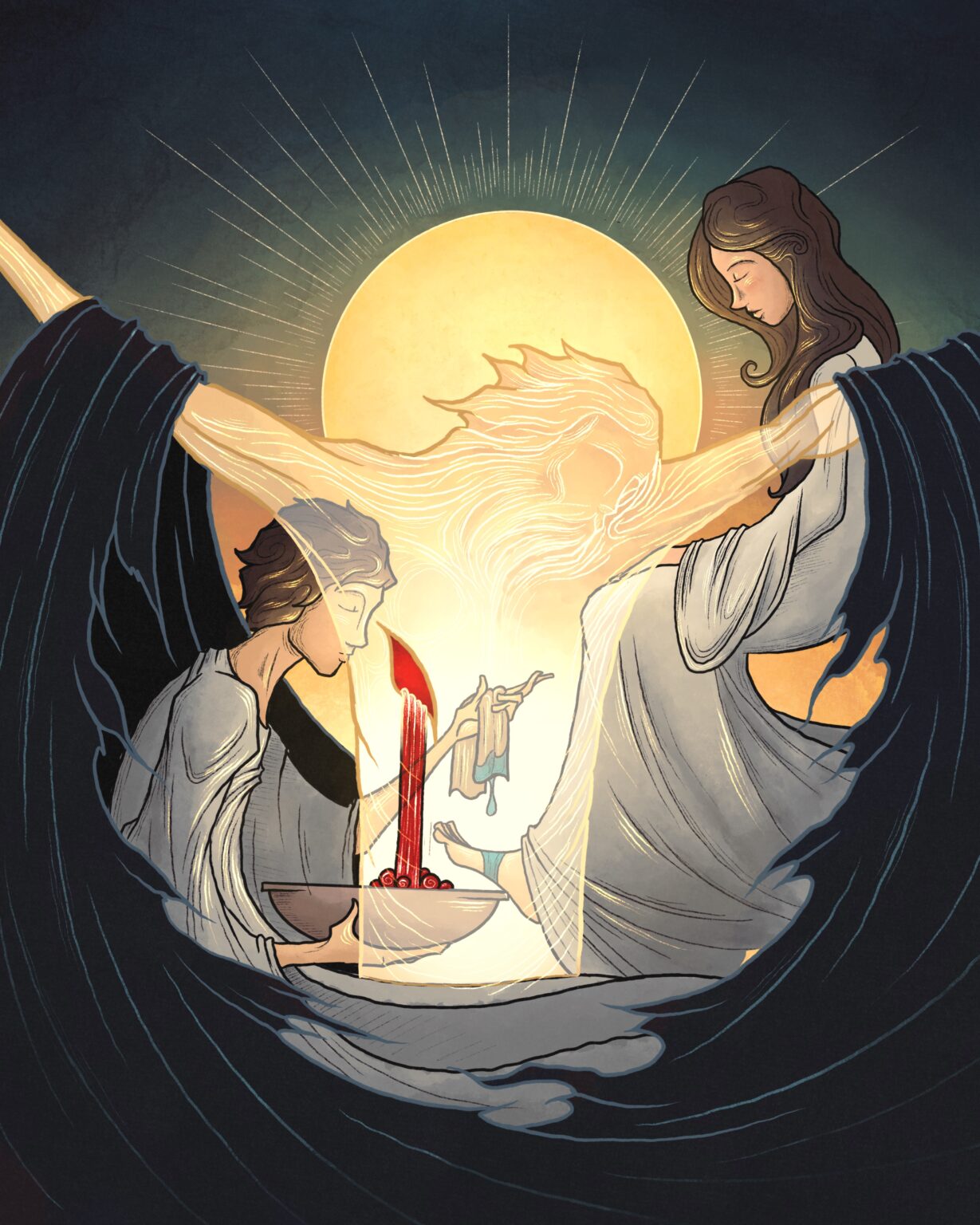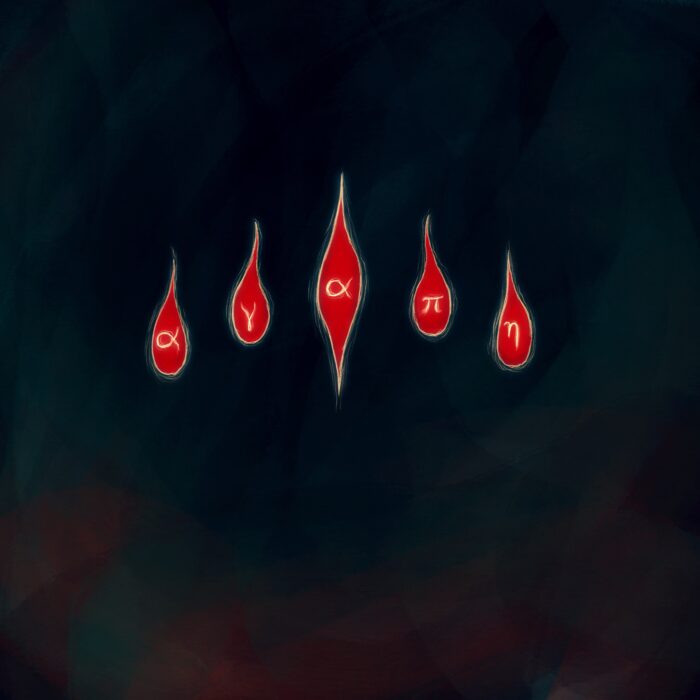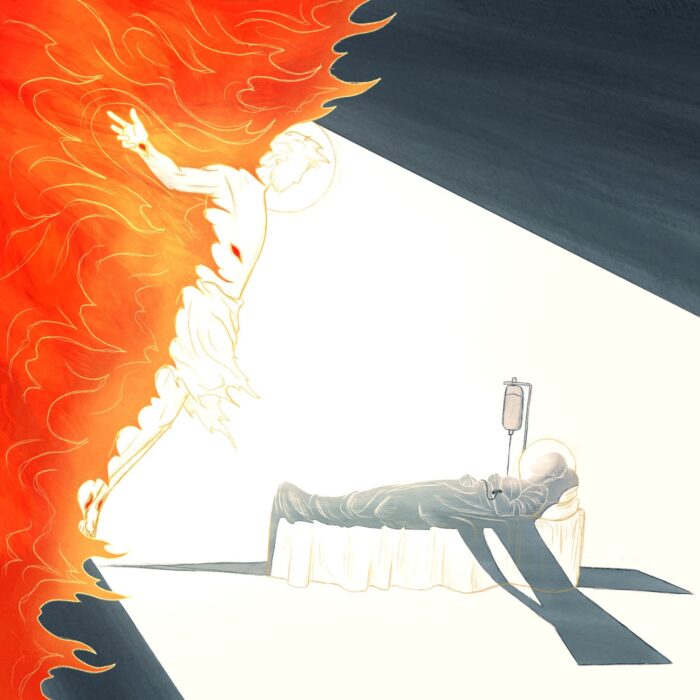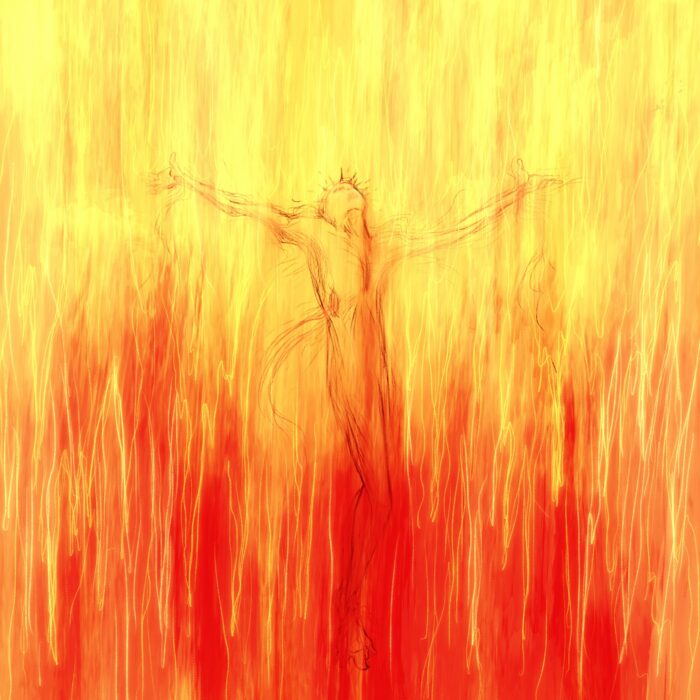I recently began preaching through 1 John at Kingstree Church. Today’s picture serves as both a ‘logo’ for that series as well as a visual summary of the message of the book itself.
The heart of 1 John appears as we consider the relationship between the book’s three central concepts, namely, Life, Light, and Love.
For John, Life—or Eternal Life—is supremely God Himself as He is made known through the Crucified Jesus Christ whom John has heard, seen, and touched as alive forevermore (1 Jn 1:1-2; 5:20; John 17:3). This is absolutely awesome to consider. As Jesus hangs on the cross—stripped for our shame, crowned with our curse, pierced through with our judgment—He opens to us, through His sin-torn flesh, the very life of God. *THIS* is who God is within Himself from all eternity.
Light is what God is (1 Jn 1:5). But its more nuanced than that, because—in John’s Gospel, of which his epistle functions as a sort of commentary—‘Light’ is specifically God *as He is made known IN Jesus Christ* (see John 1:4+17:3, 12:45-46). So, when John tells us “God is Light,” he’s saying, “God is precisely who He reveals Himself to be in the crucified Jesus who is risen.” Light, then, like life is God as He is made known at the resurrection-illumined cross.
Finally, we come to Love, which John defines explicitly as that which God discloses in Jesus’ wrath-bearing crucifixion (1 Jn 4:10). Precisely *this Love*—this love that bears sin, sorrow, death, and hell for the undeserving Beloved—precisely *this Love* is who God is (1 Jn 4:8). As with Life and Light, therefore, Love too is supremely “Who God is revealed to be at the cross of the risen Jesus.”
Thus, Life, Light, and Love are all modulations of the same Word, namely, the Word declared with the full-throated roar of God’s entire being in—and as—the flesh and blood of the Beloved Son on the cross. And the greatest of these is Love, since in it, the other two are encompassed and defined.
The slain and risen Jesus is Eternal Life, True Light, and Divine Love—and He is all of these because He is the final and defining revelation of the One True God who is Himself Life, Light, and Love everlasting.
So, in this picture, I’ve tried to depict the crucified Jesus who is risen as Life, Light, and Love *and* to show how our reception of Him gathers us as believers into this Life, into this Light, and into this Love.
First, the darkness tears away around the figure of the Crucified who bears it upon Himself and brings it to nothing with His resurrection. Instead of darkness, Christ shines brilliantly as He hangs on the cross in the interpretive light of His resurrection (pictured in the halo). So too, the saints who are within Christ—abiding in Him and in the Father as revealed in Him—are illumined by this Light.
And this Light (ie., this revelation of God in Christ) is supremely the Love displayed at the cross. Thus, those who abide in the Light of Christ also abide in the Love of Christ, which is why the saints are depicted—within Christ—as washing one another’s feet.
Finally, pictured in the moment of His self-giving death, as that death is interpreted in light of the resurrection, Christ is represented here as Eternal Life, ie., as the disclosure of God’s own infinite and internal life—as the “way God is Himself.” The eternal life of the saints is to enter into this same life, which is Love (and so Light). Thus, pictured in union to the Crucified, loving one another as He has loved them, these saints appear in the midst of ‘Eternal Life,’ carrying out in the present the timeless Life of God—which is Light and Love—as manifest in the crucifixion of the risen Jesus Christ.




